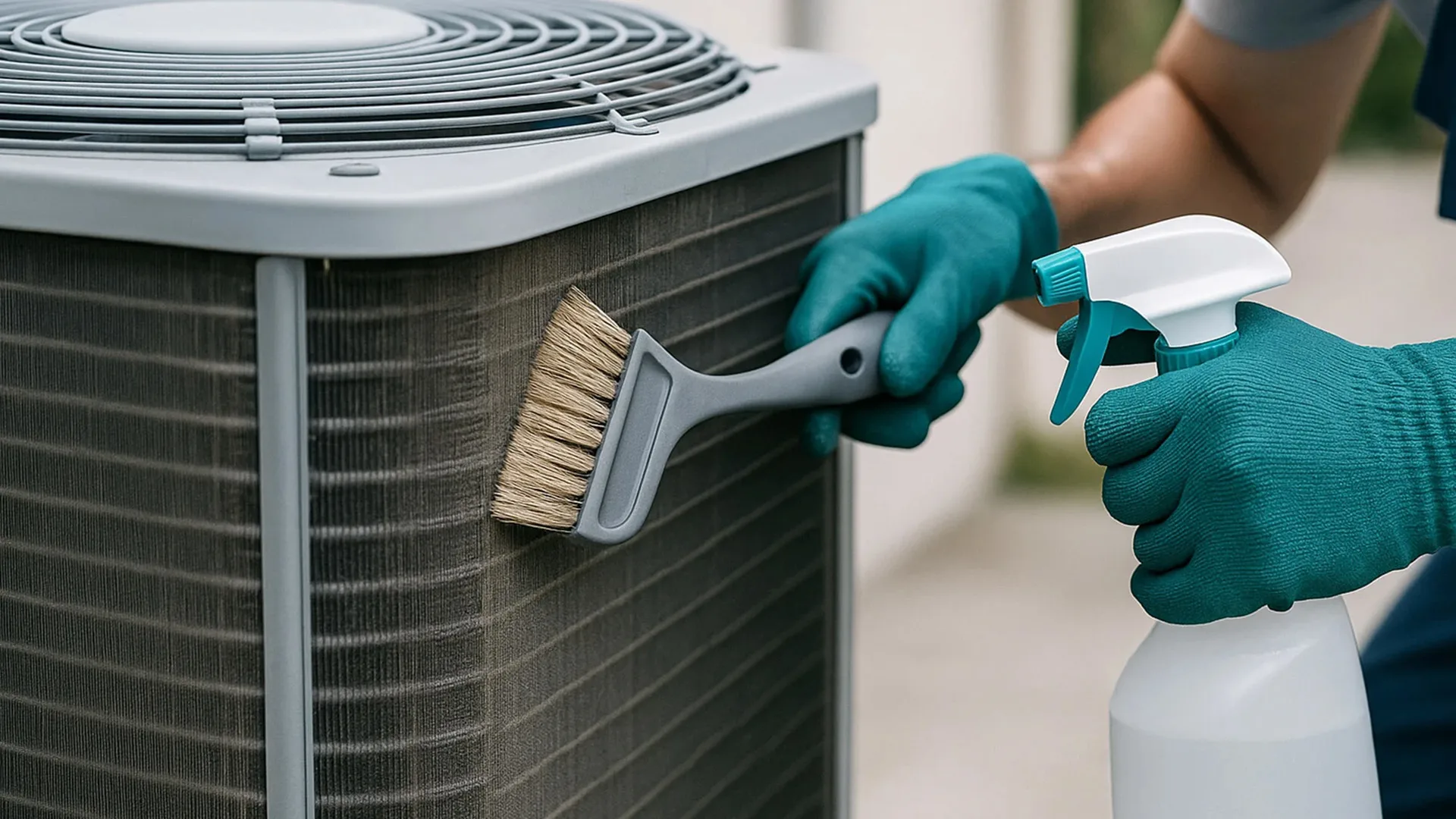AC coil cleaning removes dust, grease, and biofilm from the evaporator and condenser fins. Clean coils transfer heat efficiently, reduce compressor strain, and improve airflow, delivering faster, quieter cooling.
Why Coils Get Dirty
Indoor coils trap fine dust and moisture, forming sticky films. Outdoor coils collect pollen, lint, and road dust. This blanket acts like insulation, forcing the system to work harder to move the same amount of heat.
Benefits of Professional Coil Cleaning
- Lower energy consumption and better temperature control
- Reduced wear on the compressor and fan motors
- Cleaner, fresher air and fewer odors
- Fewer service calls during peak season
How Technicians Clean Coils Safely
Evaporator (indoor) coil
Panels are opened carefully, nearby electronics protected, and a non-acid foaming cleaner is applied and rinsed through the drain. Fins are straightened as needed.
Condenser (outdoor) coil
Debris is removed, guards lifted, and coils are washed from the inside out to avoid packing dirt deeper.
DIY vs Professional
DIY can help with light dust using a soft brush and a safe cleaner, but bent fins, hidden screws, and electrical parts can be risky. For heavy fouling, leaks, or odor issues, professional tools and cleaners are worth it.
Maintenance Schedule
Light households can schedule cleaning annually. Kitchens, workshops, or high-traffic areas may need mid-season checks.
FAQs
Will coil cleaning damage the fins?
When done with the right cleaners and low-pressure rinse, fins remain intact and efficient.
Is chemical cleaning always required?
Not always. Many jobs are completed with foam cleaners or steam depending on buildup.
How soon will I notice improvements?
Airflow and cooling usually improve immediately after cleaning.
What else should be cleaned at the same time?
Filters, blower wheel, and drain line for best results.
Conclusion
Regular AC coil cleaning restores the system’s original efficiency and prevents avoidable breakdowns. Pair it with a filter plan to keep coils cleaner for longer.

